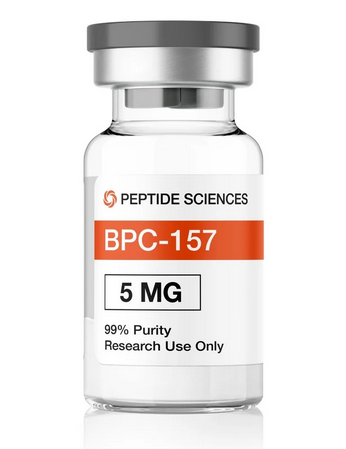The human body is an intricate and remarkable system, with the ability to heal and regenerate itself in the face of various injuries and ailments. One compound that has generated significant interest in the scientific community for its potential to enhance this natural healing process is the peptide known as BPC-157. This article delves into the science behind BPC-157 and explores its potential applications in promoting tissue repair and regeneration.
BPC-157, or Body Protecting Compound 157, is a synthetic peptide derived from a naturally occurring protein found in the human stomach. This 15-amino acid sequence has been the subject of extensive research, with studies suggesting its remarkable versatility in addressing a wide range of medical conditions.
Mechanism of Action
The key to understanding the science behind BPC-157 lies in its complex and multifaceted mechanism of action. Unlike many traditional pharmaceutical interventions that target a single pathway or receptor, BPC-157 appears to engage in a more holistic approach to healing and regeneration.
One of the primary ways in which BPC-157 exerts its beneficial effects is through its ability to modulate the inflammatory response. Inflammation is a natural and necessary process that the body uses to respond to injury or infection, but when left unchecked, it can contribute to tissue damage and impede the healing process. BPC-157 has been shown to regulate the production and activity of various inflammatory mediators, such as cytokines and prostaglandins, helping to strike a balance between the beneficial and detrimental aspects of inflammation.
In addition to its anti-inflammatory properties, BPC-157 has also been found to enhance the body's own repair mechanisms. It has been observed to stimulate the production and migration of cells involved in tissue regeneration, such as fibroblasts and endothelial cells. This can accelerate the formation of new blood vessels (angiogenesis) and the deposition of collagen, two crucial components of the healing process.
Moreover, BPC-157 has been shown to interact with various growth factor and signaling pathways, including the vascular endothelial growth factor (VEGF) and the nitric oxide (NO) systems. These pathways play vital roles in cell proliferation, differentiation, and survival, further contributing to the compound's ability to promote tissue repair and regeneration.
Potential Applications
The versatility of BPC-157 is reflected in the wide range of potential applications that have been explored in both preclinical and clinical research. Here are some of the areas where BPC-157 has shown promising results:
Wound Healing
One of the most extensively studied applications of BPC-157 is its ability to accelerate the healing of various types of wounds, including skin, gastric, and tendon injuries. Studies have demonstrated that BPC-157 can enhance the rate of wound closure, improve the quality of the healed tissue, and reduce the risk of complications, such as infection and scarring.
Musculoskeletal Injuries
BPC-157 has also shown potential in the treatment of musculoskeletal injuries, including muscle tears, ligament sprains, and bone fractures. By promoting the regeneration of damaged tissues and modulating the inflammatory response, BPC-157 has been observed to enhance the recovery process and improve functional outcomes in animal models and human studies.
Gastrointestinal Disorders
Interestingly, the origins of BPC-157 lie in its potential to protect and heal the gastrointestinal tract. Research has indicated that BPC-157 may be effective in the treatment of conditions such as inflammatory bowel disease, gastric ulcers, and intestinal ischemia-reperfusion injury, suggesting its versatility in addressing a wide range of digestive system disorders.
Neurological Conditions
The neuroprotective and neuroregenerative properties of BPC-157 have also been explored in the context of neurological conditions. Studies have indicated that BPC-157 may have the potential to mitigate the damage caused by traumatic brain injury, as well as to promote the recovery and regeneration of peripheral nerves.
Cardiovascular Health
Emerging evidence suggests that BPC-157 may also play a role in cardiovascular health. The compound has been observed to improve endothelial function, increase nitric oxide production, and promote the formation of new blood vessels, which may have implications in the prevention and management of cardiovascular diseases.
Safety and Tolerability
One of the key advantages of BPC-157 is its favorable safety profile. Extensive research has demonstrated that the compound is well-tolerated, with minimal adverse effects reported in both animal and human studies. This makes BPC-157 an attractive candidate for further clinical development and potential therapeutic applications.
Conclusion
The science behind BPC-157 peptide is a testament to the remarkable healing and regenerative capabilities of the human body. This versatile compound has shown promise in addressing a wide range of medical conditions, from wound healing and musculoskeletal injuries to gastrointestinal disorders and neurological conditions.
As the scientific community continues to explore the full potential of BPC-157, it is clear that this peptide holds significant promise as a therapeutic agent. By harnessing the body's natural healing mechanisms and promoting tissue regeneration, BPC-157 may pave the way for innovative and effective treatments that can improve the quality of life for individuals suffering from a variety of medical ailments.





Comments